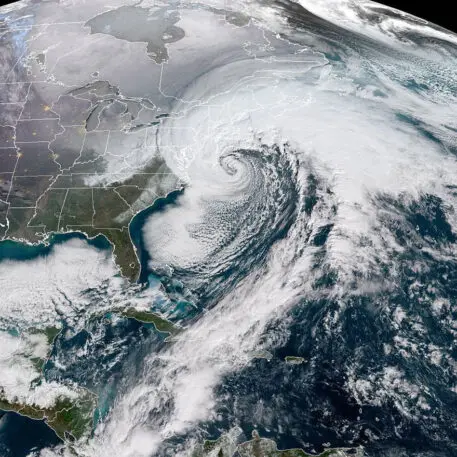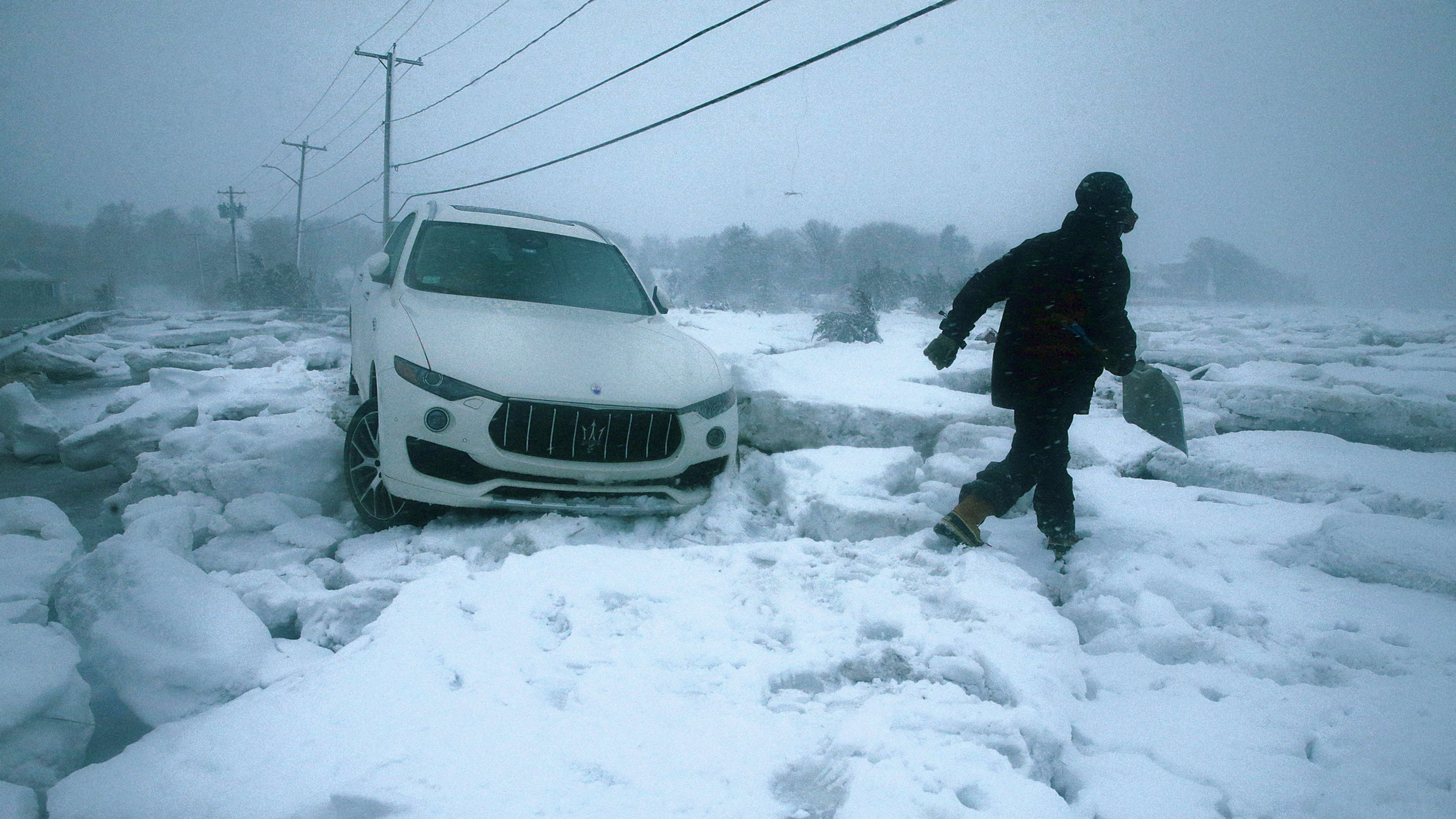A bomb cyclone is a large, intense midlatitude storm that has low pressure at its center, weather fronts, and an array of associated weather—from blizzards to severe thunderstorms and heavy precipitation. It becomes a bomb when its central pressure decreases very quickly—by at least 24 millibars in 24 hours. Two famed meteorologists, Fred Sanders and John Gyakum, gave this pattern its name in a 1980 study.
When a cyclone “bombs,” or undergoes bombogenesis, this tells us that it has access to the optimal ingredients for strengthening, such as high amounts of heat, moisture, and rising air. Most cyclones don’t intensify rapidly in this way. Bomb cyclones put forecasters on high alert because they can produce significant harmful impacts.

Over the warmer ocean, heat and moisture are abundant. But as cool continental air moves overhead and creates a large difference in temperature, the lower atmosphere becomes unstable and buoyant. Air rises, cools, and condenses, forming clouds and precipitation.
Intense cyclones also require favorable conditions above the surface. Particularly strong upper-level winds, also known as “jet streaks,” and high-amplitude waves, embedded within storm tracks, can help force air to rise.
When a strong jet streak overlies a developing low-pressure system, it creates a feedback pattern that makes warm air rise at an increasing rate. This allows the pressure to drop rapidly at the center of the system. As the pressure drops, winds strengthen around the storm. Essentially, the atmosphere is trying to even out pressure differences between the center of the system and the area around it.
Weather forecasters are predicting that the Northeast will be affected by a potent winter storm between January 28 and 30. Forecast models are calling for a swath of snow from coastal North Carolina northward to Maine.
While precise locations and amounts of snowfall are still uncertain, parts of coastal New England appear most at risk of receiving 8 to 12 inches or more of heavy accumulating snow. Coupled with winds forecast to be over 50 miles per hour along the coast, the storm is likely to produce blizzard conditions, storm surge, coastal flooding, wind damage, and beach erosion.
This storm’s life is expected to begin as a weak low-pressure system offshore of the southeast. Just 24 hours later, global models predict that its central pressure will drop by 35 to 50 millibars.
If this storm develops as forecasts predict, aided by winds blowing over 150 mph in the upper atmosphere, very warm sea-surface temperatures just offshore (2 degrees to 4 degrees Fahrenheit warmer than average), and a highly unstable atmosphere, it will have the critical ingredients for a bomb cyclone.
Esther Mullens is a assistant professor of geography at the University of Florida.
This article is republished from The Conversation under a Creative Commons license. Read the original article.
Recognize your brand’s excellence by applying to this year’s Brands That Matter Awards before the early-rate deadline, May 3.
